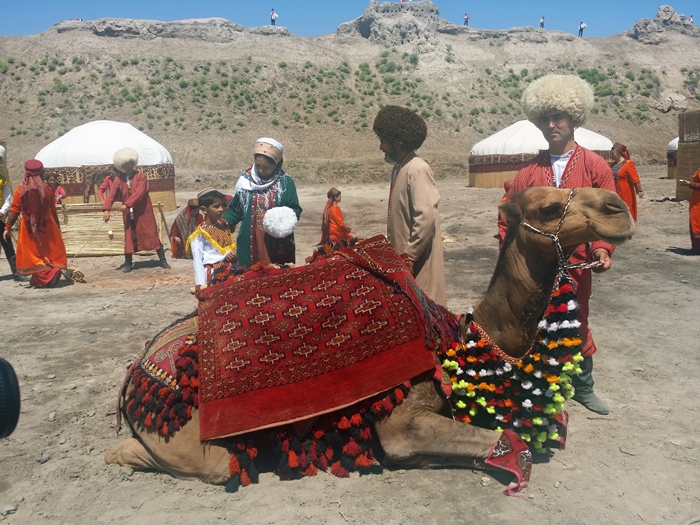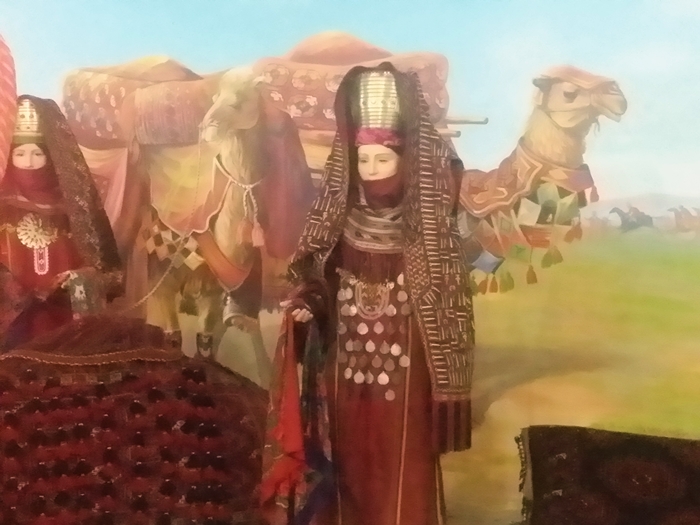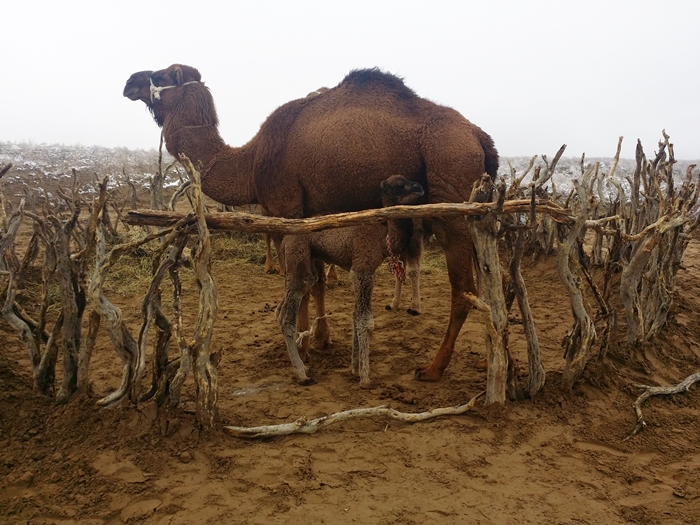The Arvana camel breed, widely raised in Turkmenistan, reigns supreme in milk production, even with a limited grazing diet. These remarkable animals thrive on a unique menu: salt marsh halophytes, bitter steppe wormwood, even conifers and semi-shrubs – plants of little interest to other grazing animals. In winter, they can even consume plant roots.
Today, Turkmenistan has several large camel farms, both state-run and private.
Serdarkuli Berdyliev, an individual entrepreneur from the Ak Bugdai district of the Akhal province, emphasizes that camel breeding is not just a profession, but an integral part of the Turkmen people’s cultural heritage. The methods of camel care, as well as recipes for utilizing their wool, milk, and meat, all have deep roots in ancient times.
Serdarkuli Berdyliev’s farm maintains a herd of 320 camels of various ages, with 140 females, a third of which are currently lactating. These productive females yield an average of six liters of milk per day, collected during two milking sessions – morning and evening. The farm processes this valuable raw material in its own workshop, transforming it into delicious chal drink and agaran (a creamy fatty mass).
The farm employs 15 specialists, including shepherds and milkmaids.
Serdarkuli aga emphasizes the camel’s remarkable adaptations. For millennia, these creatures have impressed with their ability to thrive in harsh climates. They are insensitive to dehydration, can regulate their body temperature in extreme heat, and efficiently process large volumes of water. This climate-resilient species also boasts a lower greenhouse gas footprint.
Another benefit of free-grazing camels with their young is their positive impact on desert ecosystems. Their slow, gentle movements minimize disruption to the sandy landscape. Additionally, they only consume small portions of branches and leaves, avoiding damage to the entire plant.
 The western region of Turkmenistan has a long and illustrious history of camel breeding. In the Balkan province’s district named after Turkmenbashi, the “Nurly günbatar” private enterprise manages an impressive herd of 400 camels.
The western region of Turkmenistan has a long and illustrious history of camel breeding. In the Balkan province’s district named after Turkmenbashi, the “Nurly günbatar” private enterprise manages an impressive herd of 400 camels.
According to Sarah Shikhmamedov, the deputy director of the farm, raising Arvana camels isn’t for those seeking quick profits. It’s a demanding endeavor that requires constant attention, patience, hard work, and a genuine passion for these magnificent creatures.
In 2018, the farm embarked on a breeding program by importing five Bactrian camels (of varying genders) from Kazakhstan. Over the years, this initiative has yielded a successful population of 100 offspring, including both double-humped and single-humped camels, along with hybrids.
It is believed that when a female Turkmen Arvana camel mates with a double-humped male and gives birth to a female offspring, the calf is called “ak maya” and her milk has exceptional healing properties.
The breeder also said that camel milk contains a large amount of vitamin C, which makes it the most useful for humans.
 Camels have been a true gift of nature to humanity for centuries. During the era of the Great Silk Road, travelers relied on them not only for transport but also for practical applications. They wrapped their travel bread in sachak, a cloth woven from camel wool, and donned don, long robes made from the same material, to shield themselves from the harsh desert climate, both scorching heat and cold winds.///Neutral Turkmenistan newspaper, 11 July 2024
Camels have been a true gift of nature to humanity for centuries. During the era of the Great Silk Road, travelers relied on them not only for transport but also for practical applications. They wrapped their travel bread in sachak, a cloth woven from camel wool, and donned don, long robes made from the same material, to shield themselves from the harsh desert climate, both scorching heat and cold winds.///Neutral Turkmenistan newspaper, 11 July 2024
